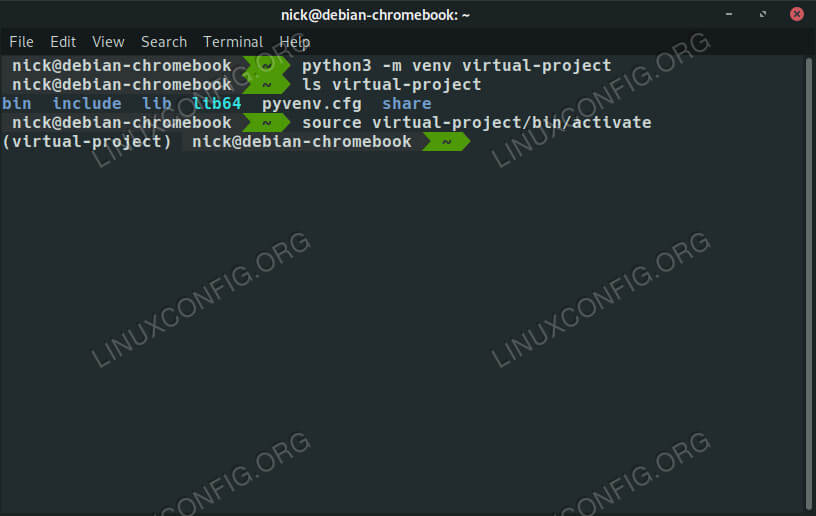

- #Mac os python 3 virtual environment install#
- #Mac os python 3 virtual environment download#
- #Mac os python 3 virtual environment windows#
To change the name of the environment, modify the first line of the environment.yml file before you install it.Īfter finish using the environment, call conda deactivate to leave it.įor more information using conda, check conda's documentation here. This will create a new conda environment with specifications of the environment.yml file. To install entire environments with respective environment.yml files, run conda env create -f environment.yml. However, we would recommend you to use the conda tool to install all of your packages. Then similarly you can use pip install some_package or conda install some_package to install your packages. # if you want to pass a specific python version i.e.
#Mac os python 3 virtual environment download#
Installing Miniconda is simple, you can just download the right package for your OS and follow the instructions here. Using conda to manage the environments requires us to install Miniconda (or Anaconda) first.Īnaconda comes with a lot of data science packages and is intended to use as a pre-installed environment, while Miniconda only comes with the minimal Python environment and the conda tool. To learn more about the use of virtualenv, check here. To install entire environments with respective requirements.txt files, create a new virtualenv environment and run pip install -r requirements.txt.Īfter finish using the environment, call deactivate to leave it. (Check the location of your python interpreter if you are not sure about the path, it should point to the envname directory.)Īfter it is activated, we can now install packages using pip install some_package within this environment. Source envname/bin/activate #Linux, macOS To use your environment, we need to activate it first: To create a virtual environment and name it envname (or whatever you prefer): Create the virtual environment while you specify the version of Python you wish to use. Py -m pip install -user virtualenv #Windows

Python3 -m pip install -user virtualenv #Linux, macOS With pip installed, we can now install virtualenv using commands below: If no version version shows up, install pip by following the link here. With Anaconda you can also specify versions of Python when you create them. Virtual environments can be created for each of your projects so that you can use whatever versions of libraries are necessary for each one. Why /Library/Frameworks/Python.We can install virtualenv using pip, check pip version first by using pip -version to make sure it’s installed. A virtual environment is an isolated Python environment that has its own dependencies, or in other words, its own versions of libraries and packages. Library/Frameworks/amework/Versions/3.7/bin/virtualenv To run python scripts you should run command python2 and python3 for Python 2 & 3 respectively. We want to use Python installed by Homebrew because it makes installing/managing packages easier. bash: /usr/local/bin/virtualenv: No such file or directoryĬhecking virtualenv location: $ which virtualenv This is the python distribution which comes with your OS and not installed by Homebrew. Okay, I made uninstall and install with -H sudo flag: Installing collected packages: virtualenvīut when I try to make a virtual environment, I got $ virtualenv venv If executing pip with sudo, you may want sudo's -H flag. check the permissions and owner of that directory. The directory '/Users/user/Library/Caches/pip' or its parent directory is not owned by the current user and caching wheels has been disabled. Please check the permissions and owner of that directory.

#Mac os python 3 virtual environment windows#
It is strange for me, because every tutorial tells about /usr/bin/python37 and nothing about /Library/Frameworks/ameworkĪfter that I made sudo pip3 install virtualenv and got this answer: The directory '/Users/user/Library/Caches/pip/http' or its parent directory is not owned by the current user and the cache has been disabled. Unaware of virtual environments, you installed all necessary packages into your global Python environment: Windows Linux + macOS. Library/Frameworks/amework/Versions/3.7/bin/python3 I try to do it with brew, but I got some strange behavior.Īt first, python3 installed not in /usr/bin/ but in /Library/Frameworks/amework directory: $ which python I start to learn Django framework so I need to install latest python, pip, virtualenv and django packets on my mac.


 0 kommentar(er)
0 kommentar(er)
